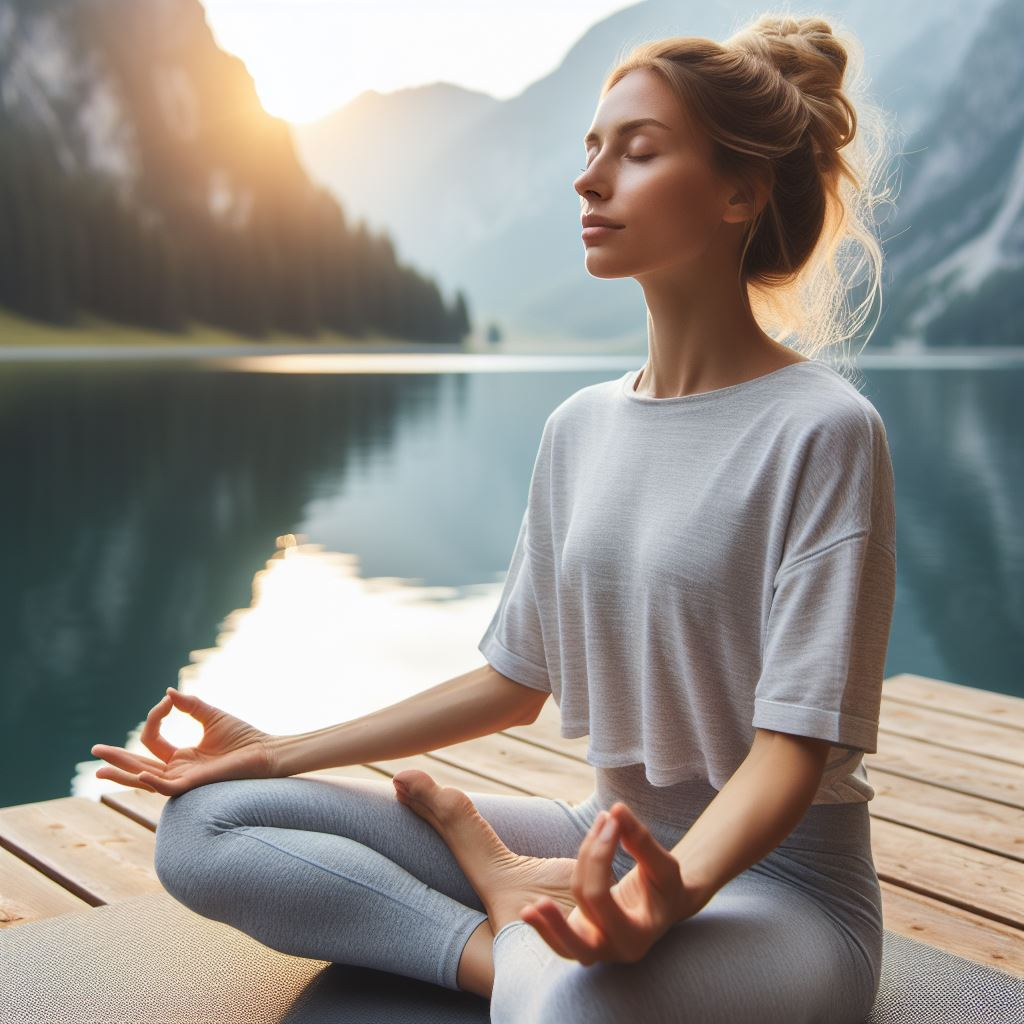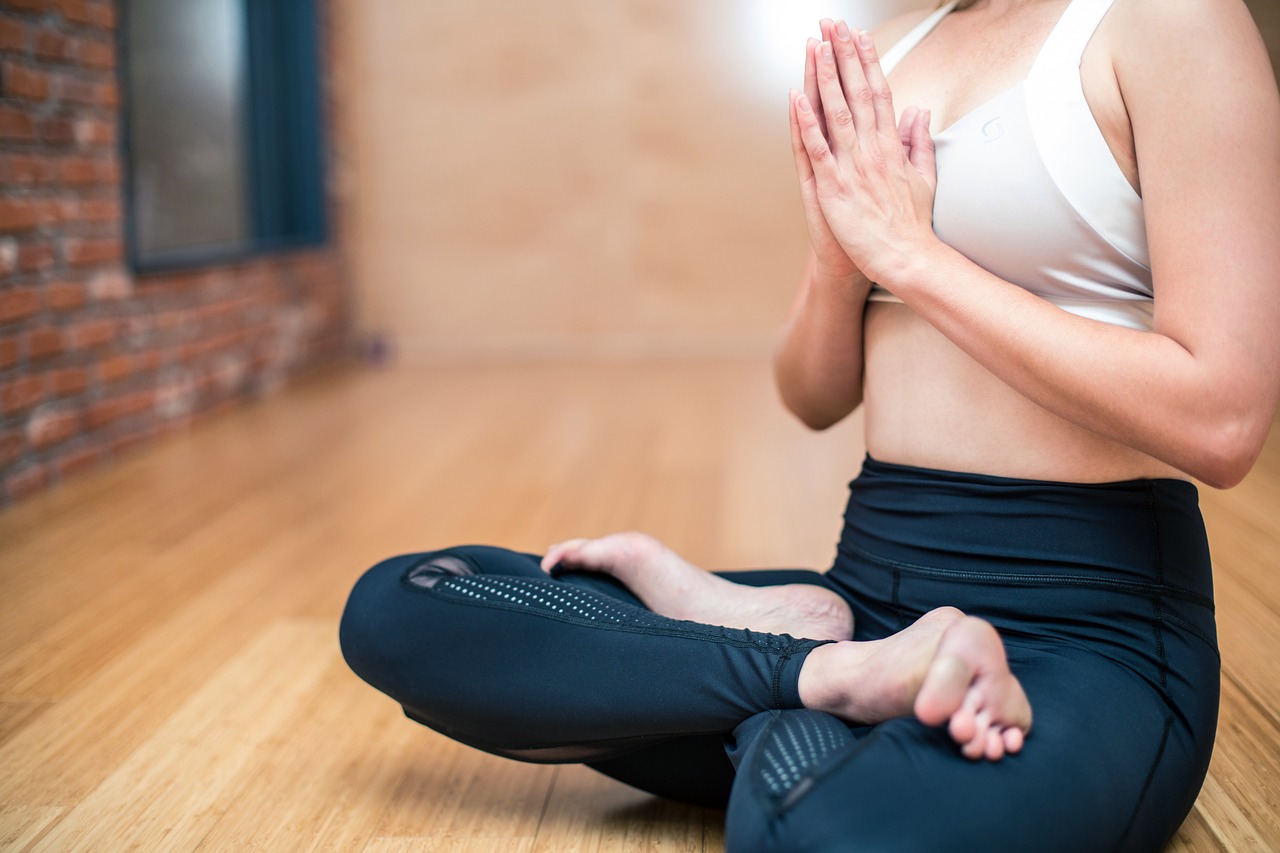Hey there, friend! Let’s talk about something real for a second. Depression is a heavy burden that many of us carry, and it can feel like there’s no escape. But what if I told you there’s a way to fight back? Enter: yoga.
Yoga is more than just a physical practice; it’s a mental and emotional rescue rope that can help you climb out of the darkest depths. And the best part? It’s accessible to anyone, anywhere.
1. How Yoga Fights Depression
Yoga is a powerful tool in the fight against depression, and its benefits extend far beyond just physical exercise. Here are four ways yoga can help you overcome the darkness of depression:
- Endorphins Galore: Yoga Releases Happy Hormones
Yoga stimulates the production of endorphins, also known as “happy hormones.” These natural mood-boosters help alleviate symptoms of depression, such as anxiety, sadness, and hopelessness. Endorphins work similarly to antidepressant medications, but without the potential side effects. Yoga poses like downward-facing dog, warrior II, and triangle pose are known to release endorphins, leaving you feeling uplifted and energized.
- Mindfulness Magic: Yoga Teaches You to Be Present
Yoga teaches mindfulness, which is the practice of being present in the moment. When you’re mindful, you focus on your breath, body, and surroundings, rather than getting caught up in negative thoughts and worries. Mindfulness helps you break free from the cycle of rumination and negative self-talk that often accompanies depression. By focusing on the present, you can begin to let go of past regrets and future anxieties, finding peace in the here and now.
- Breathing Space: Deep Breathing Techniques Calm the Mind
Yoga incorporates various breathing techniques (pranayama) that help calm the mind and reduce anxiety. Deep breathing stimulates the parasympathetic nervous system, which promotes relaxation and reduces stress. Regular yoga practice can help regulate your breath, leading to a sense of calm and tranquility. This is especially helpful when you’re feeling overwhelmed or struggling with insomnia, common symptoms of depression.
- Community Connection: Joining a Yoga Class Provides Support
Yoga classes offer a sense of community and belonging, which is essential for overcoming depression. When you practice yoga with others, you’re surrounded by people who understand your struggles and are on a similar journey. This supportive environment encourages you to open up, share your experiences, and form meaningful connections. Social support is crucial for managing depression, and yoga provides a safe space to build relationships and find encouragement.

2. Start Your Yoga Journey
Starting your yoga journey can be both exciting and intimidating, but with a little guidance, you’ll be well on your way to experiencing the many benefits of yoga. Here’s a step-by-step guide to help you get started:
- Find a Class That Suits You
Look for local yoga studios, gyms, or community centers that offer yoga classes. You can also explore online platforms like YouTube, YogaGlo, or DoYouYoga, which offer a variety of classes and styles. Consider the following factors when choosing a class:
- Style: Hatha, Vinyasa, Yin, Restorative, or Kundalini – choose a style that resonates with you.
- Level: Beginner, intermediate, or advanced – select a class that suits your fitness level.
- Schedule: Find a class that fits your schedule and lifestyle.
- Teacher: Choose a class with a qualified, experienced teacher who can provide guidance and support.
- Start Slow: Begin with Gentle Practices
As mentioned earlier, starting slow is essential, especially if you’re new to yoga or struggling with depression. Begin with gentle practices like Hatha, Yin, or Restorative yoga, which focus on relaxation, flexibility, and breathing techniques. These styles will help you build a strong foundation and prepare you for more dynamic practices.
- Invest in a Good Yoga Mat and Props
A good yoga mat can provide grip, comfort, and support for your joints. Consider investing in a high-quality mat that suits your needs. Additionally, props like blocks, straps, and blankets can help you modify poses, maintain proper alignment, and enhance your overall practice.
- Dress Comfortably and Practically
Wear loose, comfortable clothing that allows for a full range of motion. Avoid anything too baggy or restrictive, as it may get in the way of your practice. You may also want to consider investing in a few yoga-specific clothing items, like leggings or a yoga top, designed for comfort and flexibility.
- Be Gentle with Yourself
Remember, yoga is a practice, not a perfection. Be gentle with yourself, and don’t push beyond what feels comfortable. Listen to your body and honor its limitations. If you need to modify or take a break, do so without hesitation. Yoga is a journey, and it’s essential to approach it with kindness, compassion, and patience.
- Make it a Habit
Aim to practice yoga at least 2-3 times a week, and ideally every day if possible. Consistency is key to experiencing the benefits of yoga. Start with a manageable schedule and gradually increase as you become more comfortable with your practice.
- Explore and Experiment
As you become more comfortable with your practice, explore different styles, teachers, and classes. Experiment with various props, breathing techniques, and meditation practices to find what works best for you. Remember, yoga is a journey, and it’s essential to stay curious and open to new experiences.
By following these steps, you’ll be well on your way to starting a transformative yoga practice that will help you overcome depression and improve your overall well-being. Happy practicing!
3. Additional Tips
In addition to starting your yoga journey, here are some extra tips to enhance your practice and support your mental health:
- Get Moving: Combine Yoga with Other Physical Activities
Yoga is an excellent starting point, but combining it with other physical activities can boost your mood and energy levels. Try incorporating activities like walking, jogging, swimming, or cycling into your routine. Exercise releases endorphins, which can help alleviate symptoms of depression.
- Mindful Moments: Practice Mindfulness in Daily Activities
Mindfulness isn’t just limited to yoga or meditation. Bring mindfulness into your daily activities like:
-
- Eating: Savor each bite, paying attention to taste, texture, and smell.
- Showering: Focus on the sensation of water, the smell of soap, and the feeling of relaxation.
- Walking: Pay attention to your breath, the sensation of your feet touching the ground, and the surroundings.
- Seek Support: Talk to a Therapist or Support Group
Yoga and mindfulness are powerful tools, but they shouldn’t replace professional help. Consider seeking guidance from a therapist or joining a support group to share your experiences and receive support from others who understand your struggles.
- Be Kind to Yourself: Practice Self-Compassion
Remember that depression is a journey, and it’s okay to have bad days. Be kind to yourself, and practice self-compassion by:
-
- Being gentle with your thoughts and emotions
- Avoiding self-criticism and negative self-talk
- Practicing self-care and self-love
- Take Breaks and Rest: Prioritize Self-Care
Yoga and mindfulness can be intense, so remember to take breaks and rest when needed. Prioritize self-care by:
-
- Getting enough sleep
- Eating a balanced diet
- Engaging in activities that bring you joy and relaxation
- Explore and Learn: Discover New Yoga Styles and Techniques
Yoga is a diverse practice with various styles and techniques. Explore and learn about different approaches, such as:
-
- Hatha Yoga
- Vinyasa Yoga
- Yin Yoga
- Restorative Yoga
- Kundalini Yoga
- Find a Yoga Buddy: Practice with a Friend or Family Member
Practicing yoga with a friend or family member can be motivating and fun. Find a yoga buddy to:
-
- Share your experiences and challenges
- Support and encourage each other
- Explore new classes and styles together
By incorporating these additional tips into your yoga journey, you’ll be better equipped to manage depression and improve your overall mental health. Remember to be patient, kind, and compassionate with yourself throughout your journey.
Conclusion
As you embark on this journey, keep in mind that yoga is not a replacement for professional help. If you’re struggling with depression, anxiety, or other mental health concerns, please seek guidance from a qualified therapist or healthcare professional.
Yoga is a powerful tool that can complement traditional therapies and support your mental health. By incorporating yoga into your daily routine, you’ll experience the many benefits outlined in this article, including:
- Reduced symptoms of depression and anxiety
- Improved mood and overall well-being
- Enhanced self-awareness and self-acceptance
- Increased flexibility and physical strength
- Better sleep quality and energy levels
Remember, yoga is for every body, regardless of age, size, or ability. It’s a practice that meets you where you are and encourages you to grow, learn, and evolve.
As you continue on your yoga journey, be gentle with yourself, and don’t be afraid to explore new styles, teachers, and classes. Find a community that supports and uplifts you, and remember to breathe, relax, and have fun!
In conclusion, yoga is a powerful tool that can help you overcome depression and improve your overall mental health. By starting your yoga journey, exploring new styles and techniques, and seeking support when needed, you’ll be well on your way to a happier, healthier you. Namaste!





